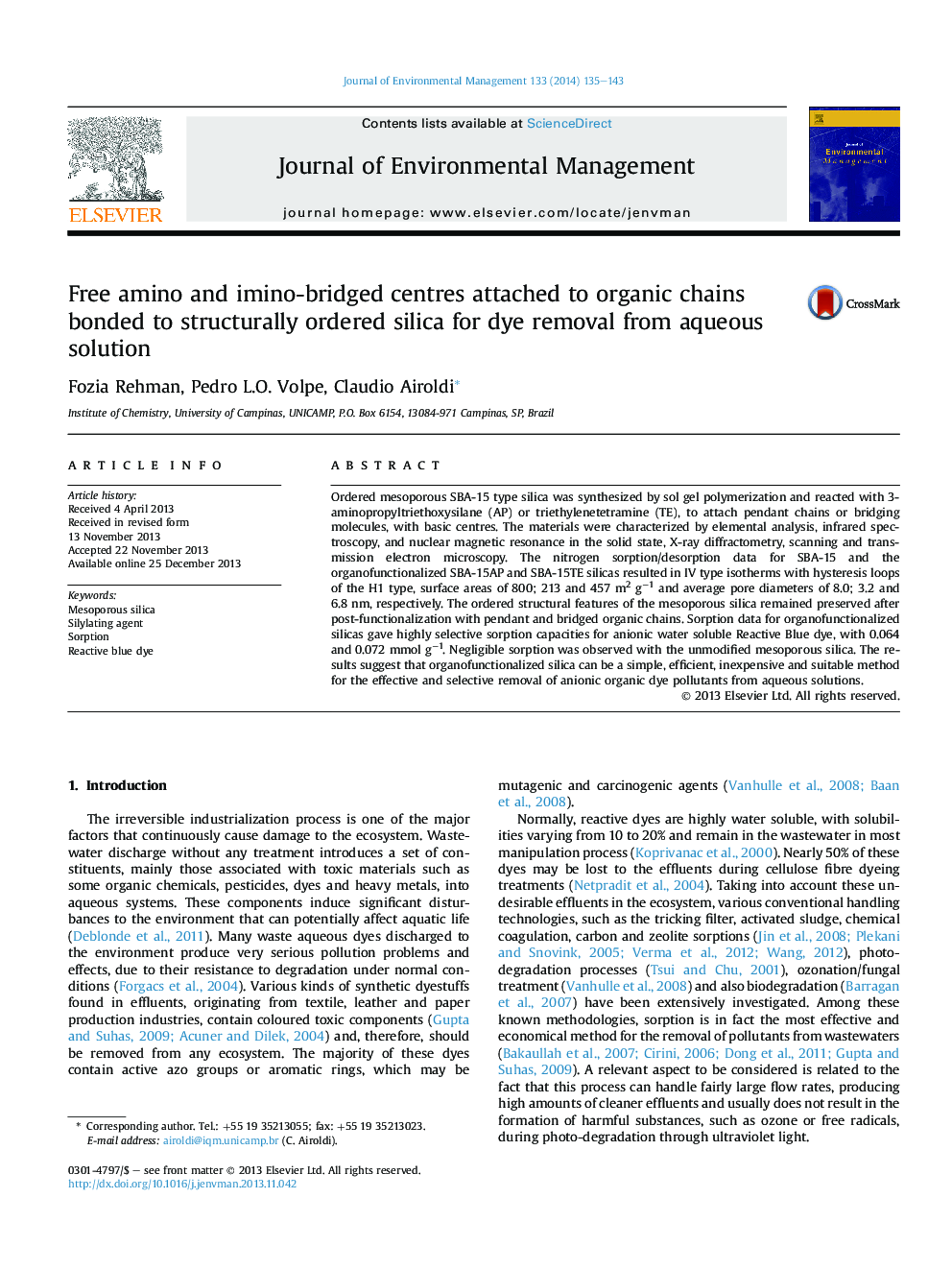| Article ID | Journal | Published Year | Pages | File Type |
|---|---|---|---|---|
| 1055833 | Journal of Environmental Management | 2014 | 9 Pages |
•Mesoporous SBA-15 silica functionalized with amine yield pendant and bridged chains.•The organofunctionalized silicas were successfully applied to Reactive Blue removal.•Sorption data gave highly selective capacities for silicas to dye removal.•The structurally ordered silicas behaved as active agent for environment features.
Ordered mesoporous SBA-15 type silica was synthesized by sol gel polymerization and reacted with 3-aminopropyltriethoxysilane (AP) or triethylenetetramine (TE), to attach pendant chains or bridging molecules, with basic centres. The materials were characterized by elemental analysis, infrared spectroscopy, and nuclear magnetic resonance in the solid state, X-ray diffractometry, scanning and transmission electron microscopy. The nitrogen sorption/desorption data for SBA-15 and the organofunctionalized SBA-15AP and SBA-15TE silicas resulted in IV type isotherms with hysteresis loops of the H1 type, surface areas of 800; 213 and 457 m2 g−1 and average pore diameters of 8.0; 3.2 and 6.8 nm, respectively. The ordered structural features of the mesoporous silica remained preserved after post-functionalization with pendant and bridged organic chains. Sorption data for organofunctionalized silicas gave highly selective sorption capacities for anionic water soluble Reactive Blue dye, with 0.064 and 0.072 mmol g−1. Negligible sorption was observed with the unmodified mesoporous silica. The results suggest that organofunctionalized silica can be a simple, efficient, inexpensive and suitable method for the effective and selective removal of anionic organic dye pollutants from aqueous solutions.
Graphical abstractFigure optionsDownload full-size imageDownload as PowerPoint slide
